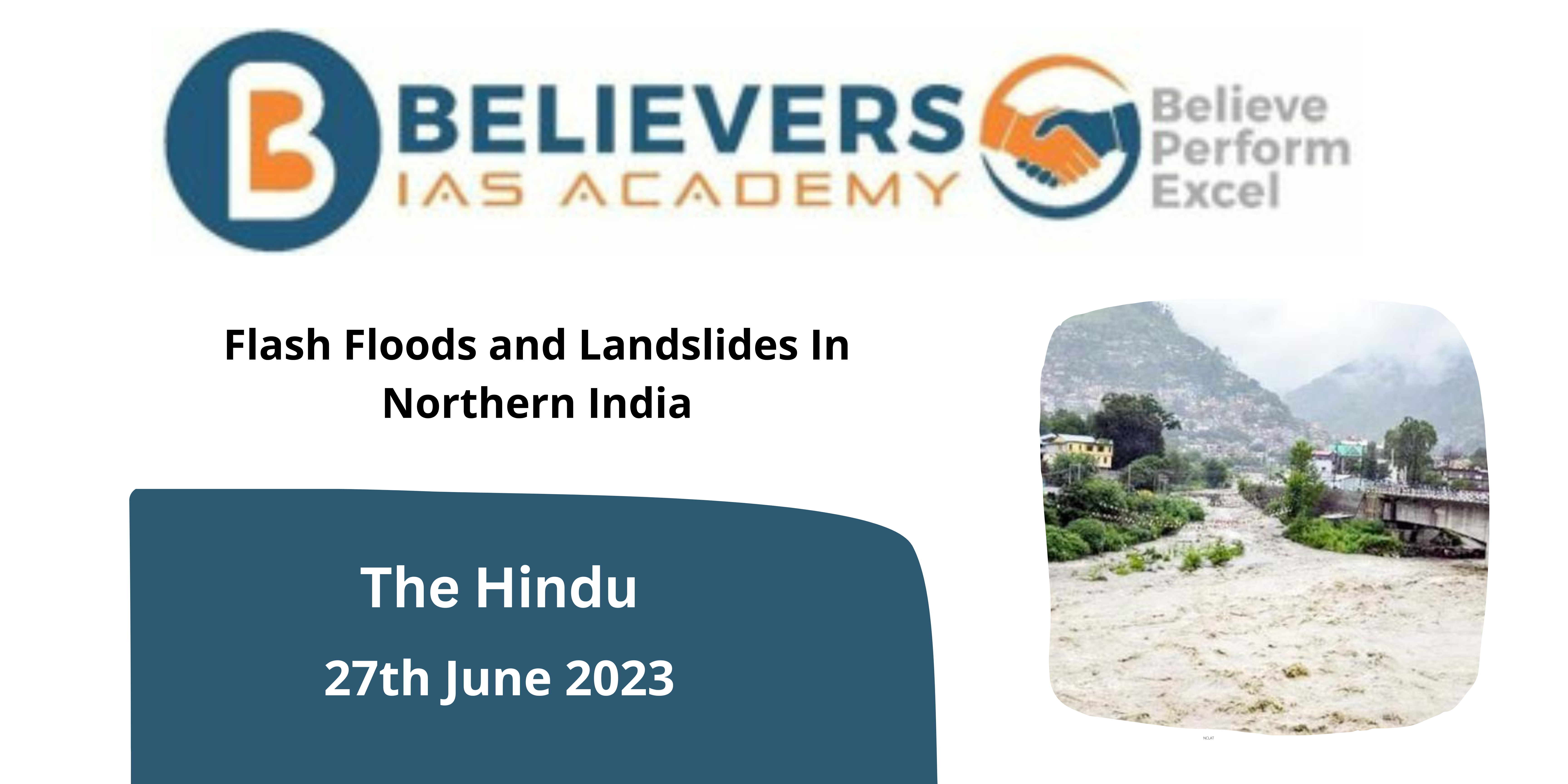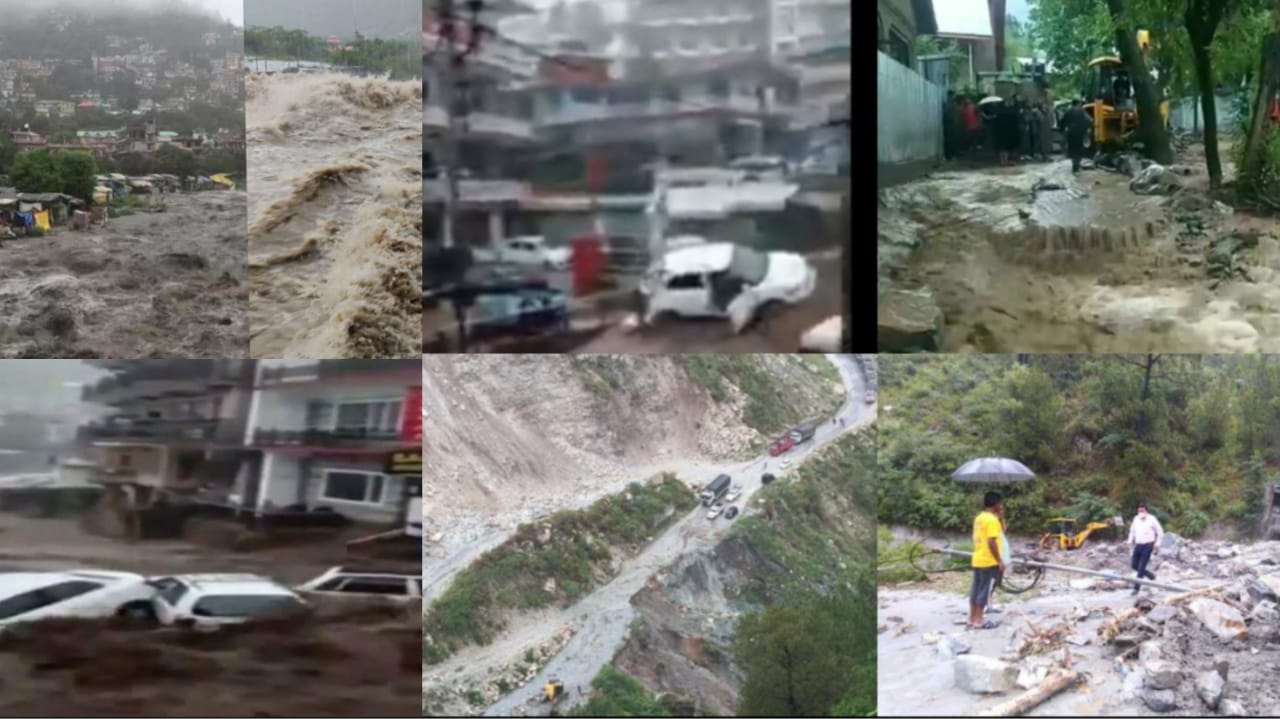Flash Floods and Landslides In Northern India
Context:
Over 200 people, including tourists and residents, are stranded in the Bagipul area of Himachal Pradesh’s Mandi district due to a flash flood.
What kind of natural disaster is happening in North India?
- Flash floods and landslides are natural disasters that can cause significant damage and pose a threat to human life.
- Flash floods are characterised by localised flooding that occurs suddenly, frequently in a matter of hours or even minutes.
- Heavy rains frequently cause them, especially in places with subpar drainage systems or urban areas with plenty of concrete surfaces.
- Other than rainfall, other causes of flash floods include levee or dam failure, abrupt releases of water from reservoirs, and the quick melting of snow or ice.
- They are especially dangerous since they are quite unexpected and can happen with little to no notice.
- Flash floods can cause infrastructure damage, the overflow of rivers and streams, flooding of low-lying areas, and eviction of people.
- The downhill movement of rock, soil, or debris along a slope is referred to as a landslip, also known as a landslip or a mudslide.
- Although they are frequently found in mountainous or hilly areas, they can occur everywhere there are slopes or unstable geological conditions.
- Because it saturates the earth and decreases its stability, heavy rainfall is a primary cause of landslides.
- By shaking the ground and causing slopes to become unstable, earthquakes can also cause landslides.
- Landslides are more likely to occur as a result of human activity like mining, excavation, and deforestation on steep slopes.
- Landslides can bury villages, obstruct highways and railways, harm buildings, and cause fatalities.
- In the case of India, cloudbursts, which are violent and localised downpours, frequently cause flash floods. The growing number of glacial lakes produced by glacier melting presents new difficulties for the Himalayan states.
- These lakes have the potential to rupture, causing flash floods downstream. These areas frequently experience landslides due to the hilly topography.
Flash Floods and Landslips in Mandi District, Himachal Pradesh:
- Flash floods and landslips in Mandi district, Himachal Pradesh, caused severe disruption and stranding of commuters, including tourists.
- The Chandigarh-Manali National Highway and Mandi-Pandoh-Kullu stretch were affected, with 301 roads closed and 140 power transformers damaged.
- The Mandi-Kullu route was initially blocked but was opened after 20 hours. Authorities used explosives to blast boulders blocking roads.
What is the difference between flash floods and normal floods?
Rapid start, high intensity, brief duration, and imminent hazard to life and property are the hallmarks of flash floods. On the other side, floods take a longer time to develop gradually, the water level rises more slowly, and they often persist longer. Both kinds of floods have the potential to be disastrous, but flash floods are more deadly because of how unexpected and abrupt they are.
How to face flash floods?
- Remain Informed: Pay attention to weather forecasts and keep yourself updated on local weather conditions. Register for emergency alerts and keep up with local news.
- Flood-prone regions should be avoided: Recognise the areas close to you that are vulnerable to flash flooding. Low-lying regions, valleys, and regions close to rivers, streams, or dams may fall under this category.
- Make a strategy for emergencies: Create a strategy for emergencies for you and your family. A meeting place, an evacuation route, and a mode of communication in case you become separated should all be included in this plan. Together with your family, run through the plan.
- Prepare an emergency supply kit: Fill the kit with non-perishable food, water, batteries, flashlights, a first aid kit, critical papers, and additional clothing. Keep this kit in a place that is simple to get to.
- Avoid flood-prone areas: Avoid driving through or walking through flooded areas when it is raining heavily or when a flash flood warning is in effect. Even small amounts of water might knock you off your feet or cause your car to stall. The best course of action is to wait for the floodwaters to subside inside.




